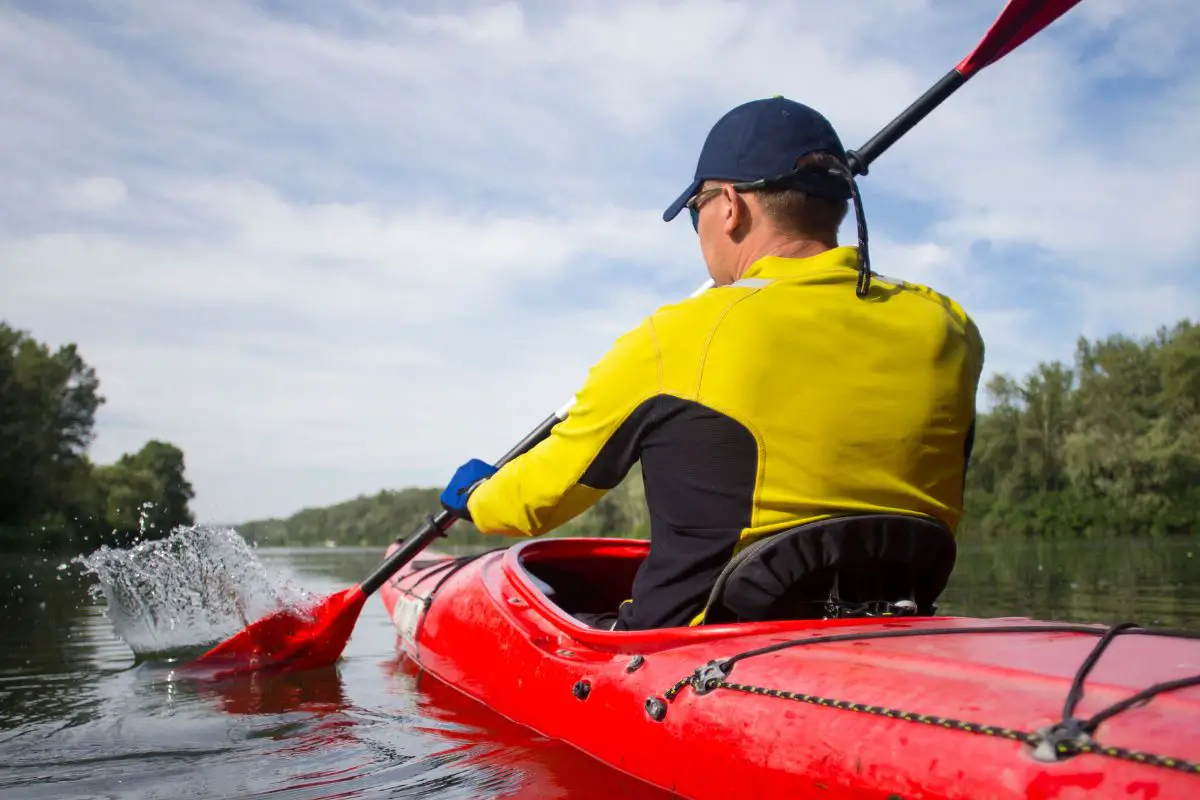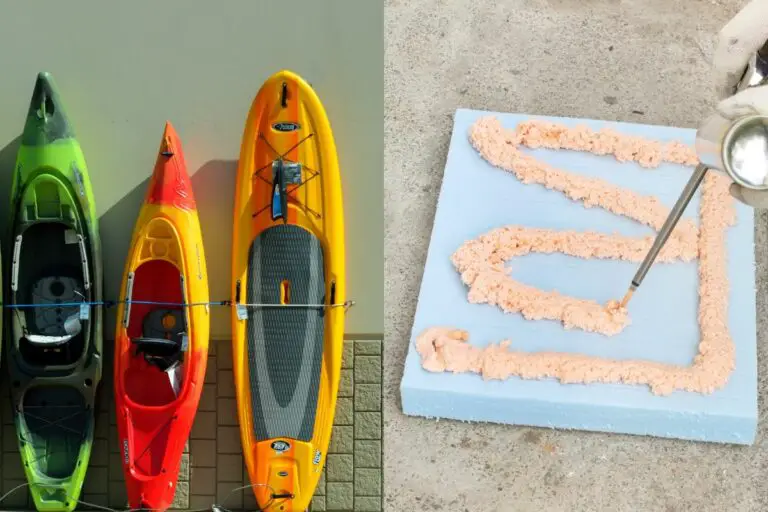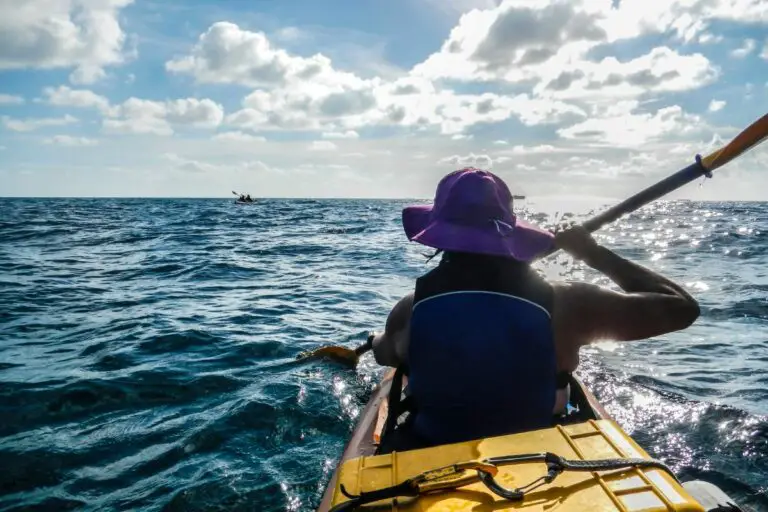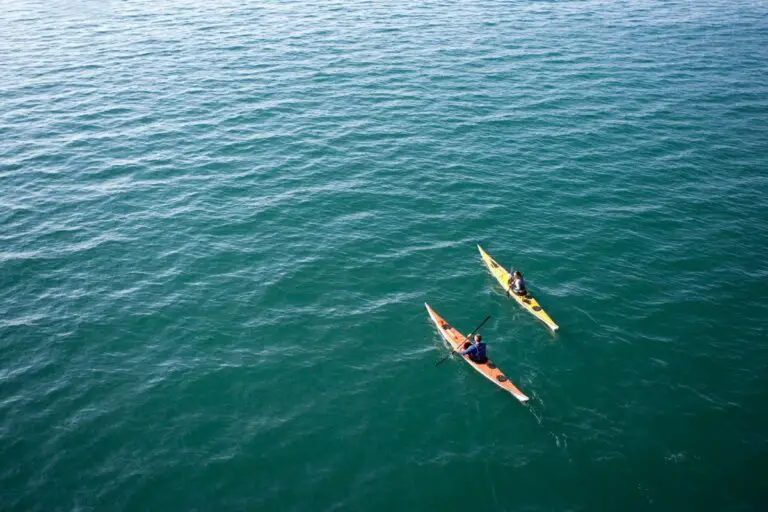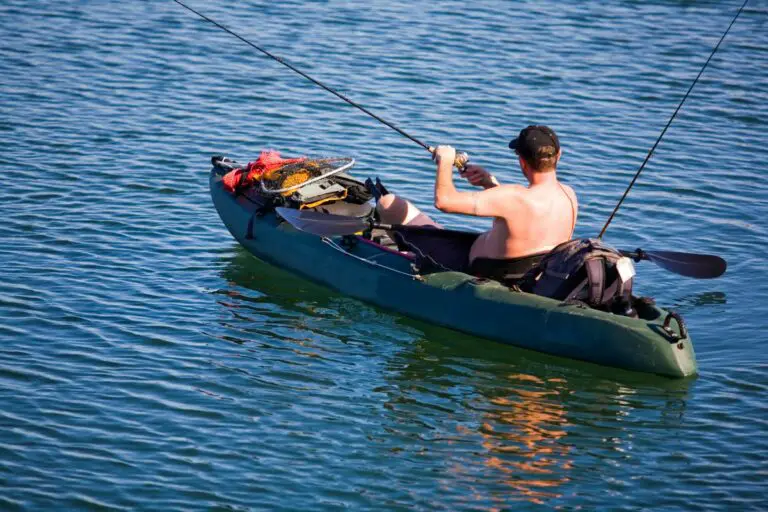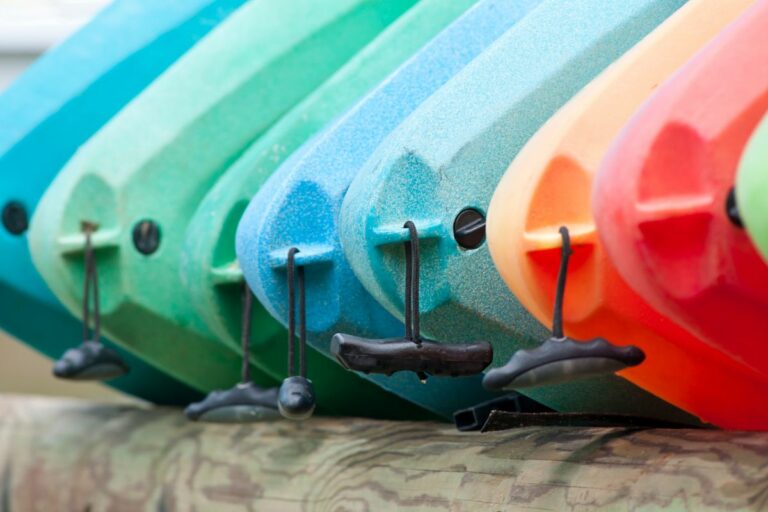How Fast Can You Kayak? 5 Factors & Calculator
Kayaking is a thrilling and adventurous sport that has been around for centuries. From leisurely paddles on calm lakes to extreme whitewater rapids, kayaking offers something for everyone.
One of the most exciting aspects of kayaking is the speed. So, how fast can you kayak?
On average, you can kayak at speeds ranging from 3 to 4 miles per hour. However, the speed of a kayak depends on various factors, including the construction of the kayak, the weather and water conditions, the weight you carry onboard, and your skill and fitness level as a paddler.
Keep reading to learn more about the factors that affect kayak speed and how to make your kayak go faster.
Table of Contents
How Fast Can You Kayak?

The speed at which you can kayak ranges from 3 to 4 miles per hour, depending on various factors related to kayak design, environmental factors, and your own abilities as a paddler.
By understanding the factors that affect kayak speed, you can improve your speed and take your kayaking skills to the next level.
Factors That Affect Kayak Speed
- Kayak Design: The design of a kayak can significantly impact its speed. Longer and narrower kayaks are generally faster, while wider and shorter kayaks offer greater stability but are slower.
- For instance, recreational kayaks, which are designed for stability and ease of use, have an average speed of 3-4 mph. Racing kayaks, which are sleek and narrow, can go up to 8 mph.
- Kayak Material: The material from which a kayak is made can also affect its speed.
- Lightweight materials like carbon fiber can make a kayak faster, while heavier materials like polyethylene can slow it down.
- Weather and Water Conditions: Wind, waves, and currents can all have a significant impact on kayak speed.
- Headwinds and strong currents can slow down a kayak’s progress, while tailwinds and favorable currents can increase speed.
- Weight Onboard the Kayak: The weight of the paddler and any additional gear or equipment can also impact kayak speed. A heavier load will slow down a kayak and require more effort from the paddler to maintain speed.
- Paddler’s Skill and Fitness Level: The skill and fitness level of the paddler can also have a significant impact on kayak speed.
Theoretical Maximum Hull Speed
The theoretical maximum hull speed of a kayak is the speed at which the kayak’s bow wave, or the wave created by the kayak as it moves forward, becomes longer than the kayak itself. It’s also known as the hull displacement speed, and it basically represents the maximum potential speed a kayak can achieve without encountering resistance from the water.
The hull speed of a kayak can be calculated using a formula that takes into account the length of the kayak’s waterline. This formula is Hull Speed = 1.34 x square root of waterline length.
For example, a kayak with a waterline length of 16 feet would have a theoretical maximum hull speed of around 6.7 miles per hour.
Kayak Max Speed Calculator
Calculate the Maximum Hull Speed for your own Kayak using this tiny tool I created:
There are a few reasons why paddlers may want to measure the hull speed of their kayak.
Firstly, it can help them understand the capabilities of their kayak and set realistic expectations for their speed. Additionally, understanding the hull speed of a kayak can help paddlers make informed decisions when selecting a kayak for a particular purpose.
For example, if a paddler is interested in long-distance paddling or racing, they may want to choose a kayak that is designed for speed and has a higher theoretical maximum hull speed. On the other hand, if a paddler is more interested in stability and ease of use, they may want to choose a wider, more stable kayak with a lower maximum hull speed.
However, it is important to note that the theoretical maximum hull speed is just that - theoretical, and the actual kayak speed will be affected by the previously mentioned factors. So, while it's a useful metric, you need to be aware of its limitations.
Paddling Speed Vs. Pedaling Speed
Pedal kayaks are a relatively new innovation in the world of kayaking, and they gained a lot of popularity due to their many advantages over traditional paddled kayaks.
One of the most significant advantages of pedal kayaks is their speed, as they have a more efficient propulsion system. So, there's a difference in the speed you can achieve when paddling a kayak compared to the speed you can achieve when peddling.
Paddling requires you to alternate between pulling the paddle through the water and resetting the paddle for the next stroke. Pedaling, on the other hand, allows for a continuous circular motion that provides a more consistent and powerful propulsion.
However, it is important to note that the speed advantage of pedaling is not necessarily significant in all situations. In calm, flat water conditions, the speed difference between paddling and pedaling may be minimal.
Ultimately, choosing between a pedal-powered or traditional paddle-powered kayak will depend on your personal preference and the intended use of the kayak. You can learn more about how fast you can go in a pedal kayak here.
How Far Can You Kayak in One Day?
A recreational kayaker can cover anywhere from 8-20 miles in a day, assuming calm, flat water conditions and a moderate pace.
Kayakers with more experience or those with high-performance kayaks may be able to cover up to 30-40 miles in a day. However, in rough water or adverse weather conditions, the distance covered may be significantly less, regardless of experience or kayak design.
Ultimately, the distance that you can kayak in an hour or in a day will vary based on individual factors and the specific conditions of your paddling route. You can learn more about how far you can kayak if you're a beginner here.
How Long Does It Take to Kayak A Mile?
On average, a recreational kayaker paddling a sit-on-top kayak at a moderate pace of around 3 miles per hour can cover a mile in approximately 20-30 minutes.
However, the time it takes to kayak a mile can vary greatly depending on several factors, such as the paddler's skill level, the type of kayak, weather, and water conditions, and the presence of currents or wind.
For instance, a more experienced and skilled kayaker using a lighter and more efficient kayak can cover a mile in less time, while a beginner paddling in difficult conditions may take longer.
Why Does Kayak Speed Matter?

Understanding kayak speed is important for several reasons.
Firstly, it allows you to plan and prepare for a paddling trip by choosing the appropriate kayak, determining the distance to be covered and the time required, and taking into account the potential challenges that may be encountered along the way.
Secondly, it can help you to monitor your performance and progress during the trip, allowing you to navigate through potentially hazardous conditions and adjust your pace or route as necessary to ensure you reach your destination safely and efficiently.
Finally, it can enhance your overall enjoyment and paddling experience, as you’ll be able to choose the appropriate pace and distance for your skill level and goals.
What Is The Fastest Recorded Kayak Speed?
The fastest kayak speed is approximately 20 miles per hour. However, it's worth noting that such speed is typically achieved by professional and highly trained kayakers in specially designed and modified kayaks and is not representative of the speed that most recreational kayakers can achieve.
How to Kayak Faster?
There are several techniques that can be used to kayak faster:
- Improve your paddling technique: Proper paddling technique involves using your core muscles and torso rotation to generate power rather than relying solely on your arms.
- Take lessons or practice with an experienced kayaker to learn proper paddling form.
- Increase your fitness level: Building strength and endurance through regular exercise can improve your paddling speed and efficiency. Focus on exercises that target your core, back, and arm muscles, such as rows, planks, and push-ups.
- Choose the right kayak: Kayaks designed for speed and efficiency can help you paddle faster.
- Look for kayaks with streamlined hulls, narrow widths, and long waterlines. However, keep in mind that these kayaks can be less stable and more difficult to maneuver.
- Reduce drag: Anything that creates drag on your kayak can slow you down, so minimize the amount of gear and equipment you bring along and keep it securely stowed to reduce wind resistance.
- Take advantage of currents and wind: Paddling with the current or wind can increase your speed, so plan your route accordingly. However, be aware of potential hazards and adjust your speed and direction as needed.
Remember that paddling faster requires practice, patience, and persistence. So, start by focusing on improving your technique and fitness level, and gradually work your way up to longer and faster paddling trips.
Kayak your way to Freedom
- On a budget? Check out the best fishing kayaks under $500 here and the best Fishing Kayaks under $1,000 here. Or Check the best Cheap Kayaks here.
- Going fishing? Here are the best Ocean fishing kayaks, and here are the best River Fishing Kayaks.
- You can also find the best Fly Fishing Kayaks here and the best Bass Fishing Boats here.
- A bit experienced? Check out the best modular kayaks here and the best tandem fishing kayaks here.
- Looking for something special? Check out my favorite Ducky kayaks here.
- Navigate your way with these awesome and beginner-friendly Kayak compasses.
- Going Hunting? These Duck hunting kayaks will give you an unfair advantage!
- Have a need for speed? These motorized kayaks will get you moving.
- Protect yourself from the sun with these Kayak shades, and make your kayak more comfortable with these Kayak seats.
- Keep your feet dry and warm with these superb Kayaking shoes.
- Going Kayaking in cold water? Stay warm with these Kayaking gloves.
- Paddle Less, Fish More with the Best Kayak Motors
- Looking to get a trolling motor on your kayak? Check out the best kayak trolling motor mounts here.
If you like this article, please share it or pin it, you can find the share buttons below. We will really appreciate it ❤️

